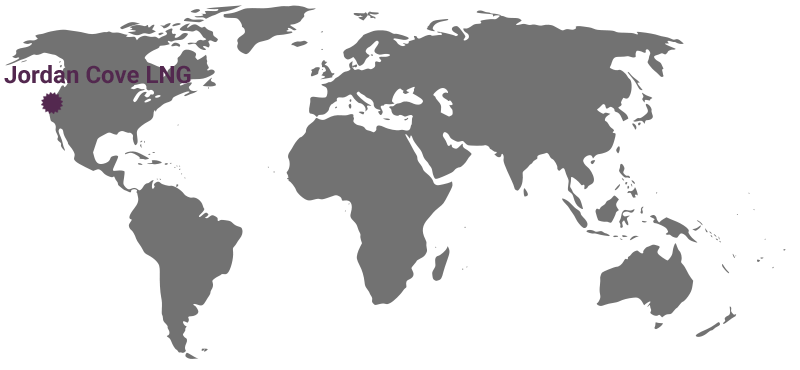After LNG Canada, these are the top 5 pre-FID LNG projects to watch

New FIDs on the horizon
When a final investment decision was made on the $40 billion LNG Canada megaproject earlier this month, the LNG industry let out a collective sigh of relief. The FID is the first instance of a major project approval since 2015, and the first ever not to be underpinned by a long term supply agreement.
The product of a seven year period of deliberation, LNG Canada is a joint venture between Shell, PETRONAS, PetroChina, Mitsubishi Corporation and KOGAS. It has been described by Prime Minister Justin Trudeau as the “single largest private sector investment project in Canadian history.”
Due to ship its first cargo in the mid 2020’s, the project will supply the global market with 14 million tonnes of liquefied natural gas per annum. It is expected to trigger a new wave of high cost, high risk LNG investments in the same mould.
The industry has been waiting for this wave for quite some time. An absence of new capacity additions over the last few years, paired with growing global gas consumption, has fuelled speculation about a market that will tighten some time around the early-to-mid 2020’s.
New projects will be needed to avoid a supply deficit of as much as 160 mmtpa by the year 2025, according to forecasting by Bernstein Research.
But escalating construction costs, the erosion of long-term supply contracts, low energy prices in key markets, worries about short-term oversupply, and questions about the reliability of Asian demand had until recently made the economics of large, risky projects uncertain.
As a result, the last few years have seen a pattern of lower cost brownfield development, and FIDs that have been repeatedly cancelled or delayed. In an interview with KNect365 Energy earlier this year, McKinsey’s Dumitru Dediu told us that of the 1000+ mmpa of pre-FID capacity under consideration, only 10% is likely to ever see the light of day.
The success of LNG Canada will break the spell of hesitancy that has tied up the most promising of these new projects. It will also help to put to bed the notion that large export projects need to be underpinned by long-term contracts to secure financing.
Perhaps in the final months of this year, and certainly over the course of 2019, we can be confident of seeing a chain of new FIDs take shape as the industry seeks to balance out the expected mid-2020’s supply deficit.
If you’re watching to see what happens next, these are the top five pre-FID LNG projects you should keep an eye on.
Want more articles like this? Sign up to the KNect365 Energy newsletter.
Mozambique LNG
Where is it? Cabo Delgado province, Mozambique, South-East Africa

Who is investing? Project leaders Anadarko are partnering with Mitsui & Co, ONGC, ENH, Bharat PetroResources, PTTEP and Oil India Limited.
How much will it cost? $20 billion.
When is an FID expected? Probably in the first half of 2019.
What will the capacity be? 12.88 mmtpa from the first two liquefaction trains, with the potential to rise to 40 mmtpa with the addition of new trains.
Why this project? Mozambique’s recoverable natural gas reserves in offshore area 1 of the Rovuma basin amount to 75 trillion cubic feet. Anadarko owns a 26.5% working interest in the area, which is spread over 2.6 million acres.
As it is located in the Indian Ocean, the project is also well positioned to meet growing demand in South Asia. Government targets in India aim to increase natural gas’s share of the energy mix from 6.5% today to 15% by the year 2022. The country is planning to build another 11 LNG receiving terminals, raising its import capacity to 70 mmtpa.
What has happened so far? Exploration of Mozambique’s offshore gas fields was approved by the government in 2007, with the first deepwater discovery made in February 2010. The reserves were independently certified in October 2015, clearing the way for the development of a two-train LNG project. An LNG development plan submitted by Anadarko was approved by the Mozambican government earlier this year.
Mozambique LNG say that they have already secured “key terms and conditions for sales” exceeding the minimum target for an FID of 8.1 mmtpa, including a 15 year 1.5 mmtpa supply agreement with Électricité de France. The full details of many of these prospective deals have yet to be publicly announced.
Driftwood LNG
Where is it? On the Calcasieu River, Louisiana, USA.

Who is investing? The project is the creation of US LNG innovators Tellurian, who have announced that Total SA, General Electric Co, and Bechtel have been confirmed as project partners. They have also indicated that there are 25 customers interested in purchasing equity in the project.
How much will it cost? $30 billion.
When is an FID expected? Probably in the first quarter of 2019.
What will the capacity be? 27.6 mmtpa.
Why this project? To get around the difficulty of securing project financing, Driftwood LNG is predicated on a radically different investment model.
Rather than seeking long-term supply agreements, the company is trying to persuade customers to participate in financing the project by purchasing equity in Tellurian’s subsidiary Driftwood Holdings. Participants will have the option to offload LNG at the operating cost of $3/MMBtu FOB. Tellurian have stated that they expect to be able to provide a landed cost in Japan of $6/MMBtu.
The Driftwood LNG project will be located close to the Haynesville Shale formation, which may hold as much as 500 trillion cubic feet of gas.
What has happened so far? Tellurian applied for project approval from the Federal Energy Regulatory Commission in March 2017. A draft environmental impact statement was issued by FERC in September this year, with final FERC approval expected in January next year.
Fortuna LNG
Where is it? Offshore, Equatorial Guinea, Central West Africa.

Who is investing? The project’s originators Ophir Energy are currently partnered with Golar LNG. Ophir had originally partnered with OneLNG, a joint venture between Golar and Schlumberger. OneLNG’s dissolution earlier this year was a severe set-back to the project.
How much will it cost? $2.1 billion.
When is an FID expected? Perhaps as early as the end of this year, although the project has already been delayed several times since the original expectation of an FID in 2016.
What will the capacity be? 2.2 mmpta.
Why this project? Ophir holds an 80% operating interest in Block R, an offshore natural gas resource close to the Niger delta. As the 3 trillion cubic feet of gas found in Block R is 99% methane, it will require very little topside processing, which is why a floating liquefaction project was deemed viable.
What has happened so far? The project entered front-end engineering and design in 2015. An umbrella agreement was signed in May 2017, and commercial terms have been arranged with trading company Gunvor prior to the finalisation of an offtake agreement.
Arctic LNG 2
Where is it? Utrenneye, close to Yamal LNG, North West Siberia, Russia.

Who is investing? Project leaders Novatek have stated that they wish to retain a 60% stake in Arctic LNG 2. Total, who also own a 19% stake in Novatek themselves, have signed an agreement for a direct working interest of 10% in the project.
How much will it cost? $25.5 billion.
When is an FID expected? In the second half of 2019, providing Novatek are able to attract the right partners.
What will the capacity be? Three trains producing a combined total of 19.8 mmpta.
Why this project? With the related Yamal LNG project, Novatek have already demonstrated the ability to finance and build large-scale LNG projects on schedule in challenging conditions.
Novatek has said that it expects the costs for the new project to be reduced by 30% compared to Yamal LNG. This will be achieved through the use of floating GBS LNG trains, which can be constructed off-site in Murmansk.
Yamal LNG made headlines around the world earlier this year when it shipped the first ever LNG cargo through the Northern Sea Route. Novatek is now looking to expand its involvement further down the supply chain by establishing a shipping company, Sea Arctic Transport, to deliver cargoes from Yamal and Arctic LNG 2 to consumers in Asia.
There are also plans to build a transhipment facility in Kamchatka, which will allow Novatek to reduce the cost of shipping LNG to consumers in North East Asia.
As with Yamal LNG, the new project will draw on natural gas reserves in the Utrenneye gas field, the second largest in the world, which contains deposits of 10 trillion cubic metres of gas.
What has happened so far? Front-end engineering and design for the project is already underway and is expected to be completed later this year.
Jordan Cove LNG
Where is it? Coos Country, Oregon, North West USA.

Who is investing? The project’s originators, Versen, were purchased by the Pembina Pipeline Corporation last year. The purchase was interpreted by the market as a positive signal for the Jordan Cove project, given that Pembina have more financial clout to bring to the table.
How much will it cost? $10 billion.
When is an FID expected? Probably in 2019, contingent upon FERC approval.
What will the capacity be? 7.8 mmtpa.
Why this project? If it goes ahead, Jordan Cove will be the only US LNG project situated on the west coast. That will reduce the shipping time to Asia considerably, and will also help to reduce the risk of delays caused by congestion in the Panama Canal.
What has happened so far? Jordan Cove filed an application for approval by FERC in September last year. FERC rejected the original proposal made by Versen in 2016. A decision on the new application is expected by November this year.
